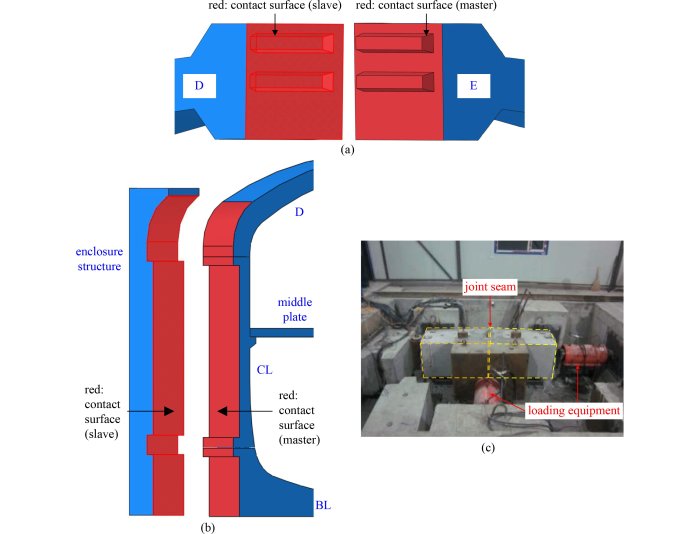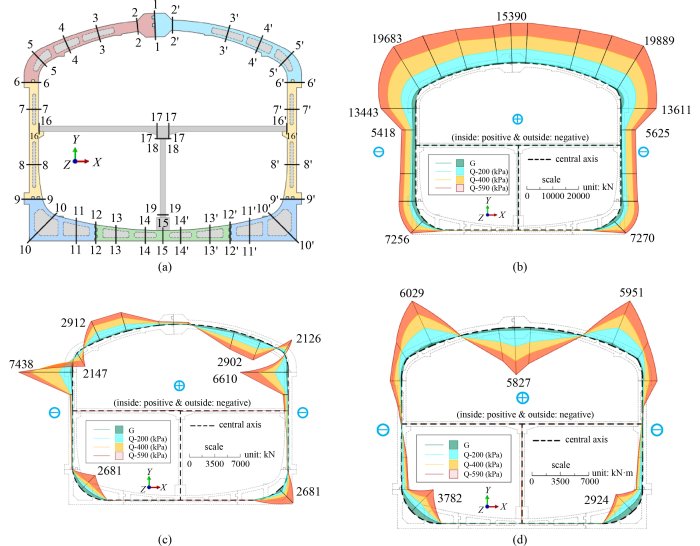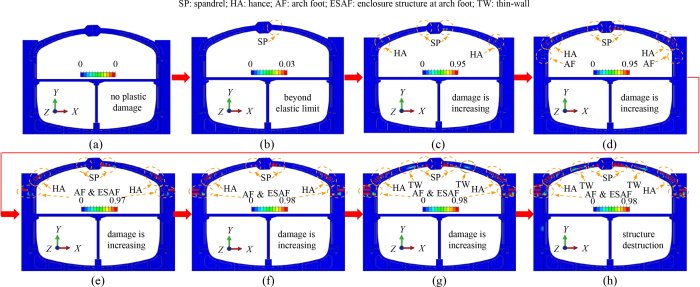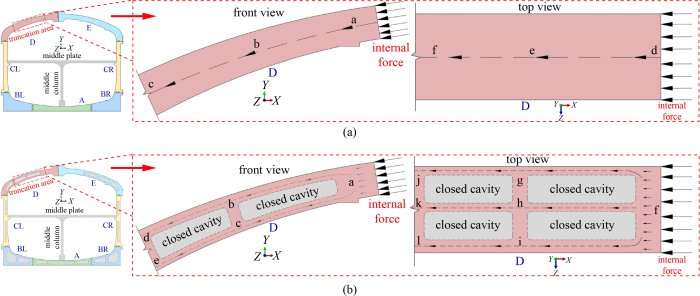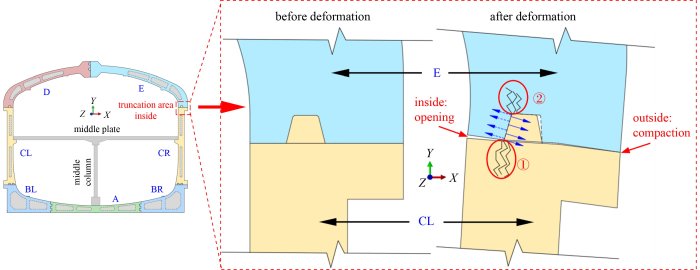Russia, the Netherlands, France, Japan, and other countries have used PCT in underground projects and have achieved many research results [
15,
16]. For example, the United States successfully constructed an underground fuel depot using PCT in 1985 [
17]; Russia built an Olympic subway station using a prefabricated single-arch structure in 1996 [
18]; Tokyo, Japan, built an underground reservoir using prefabricated concrete beam technology in 1998 [
19]; the University of Minnesota in the United States built an underground library using prefabricated concrete circular slabs in 2000 [
20]. Until the present, the PCT has mainly been used in the construction of tunnels by the shield method and underground comprehensive pipe corridors with smaller dimensions in China’s underground engineering. Chinese scholars [
21–
24] have carried out a lot of research work on the design of shield segments, the performance of segment joints, and the seismic design of shield tunnels. However, the application and research of PCT in large underground structures is still in its infancy. The Yuanjiadian (later renamed Shuangfeng) Station [
25–
27] of Changchun Rail Transit Line 2 was the first large-scale subway station constructed with PCT in China. After successful application in several stations in Changchun, it has gradually been applied in subway station construction in Qingdao and Shenzhen. Ding et al. [
28–
30], Tao et al. [
31,
32], and Li et al. [
33–
35] studied the overall performance of prefabricated subway station structures (PSSS) and the mechanical properties of the tongue-and-groove joints of the PSSS, respectively. Studies showed that the PSSS had good integrity, and the joints had good mechanical properties. The seismic performance of the PSSS was basically equivalent to that of the CIP structure under design and rare earthquake conditions. Furthermore, the Jin’anqiao Station [
36–
39] on Beijing Subway Line 6 was constructed with an integral assembly structure. Precast concrete square piles were used to construct the enclosure structure in the deep and large foundation pit project of the Yanmazhuang West Station [
40] of Jinan Rail Transit Line 1. The Wuzhong Road Station [
41] of Shanghai Subway Line 15 adopted the construction technology of large-span column-free subway station with prefabricated assembly combined with CIP superimposed arch shell, which could effectively speed up the construction progress. In order to meet the lightweight requirements in the process of prefabricated component production, hoisting and transportation, and on-site assembly, and to optimize the mechanical properties of the prefabricated structure, many scholars proposed a research idea of combining PCT with hollow structure. The intention has been to offer innovation and environmental protection through experimental analysis and theoretical research on prefabricated structures. For example, Chu et al. [
42] and Xiong et al. [
43] studied and compared the mechanical behaviors of precast hollow shear wall and CIP shear walls through quasi-static experiments. Studies showed that the shear behavior of precast hollow shear wall was slightly lower than that of CIP shear wall, but the ductility and hysteretic energy of the precast hollow shear wall were better than those of the CIP shear wall. Gu et al. [
44] compared the seismic performance of double-face superposed shear wall and CIP shear wall and found that the mechanical properties of the precast hollow shear wall under cyclic loading were similar to those of the CIP shear wall. Furthermore, the floors and roofs assembled from prestressed hollow slabs in modern industrial buildings also had better bending and shear resistance, and had many advantages compared with traditional concrete components, such as better quality-control, lower on-site labor cost and shorter construction time [
45–
47]. Cases of combining PCT with hollow structures also included prefabricated hollow slab bridges [
48–
50], prefabricated hollow piers [
51,
52], prefabricated hollow stairs [
53], and so on. When the prefabricated structure adopted a reasonable hollow type, it could reduce the self-weight of the structure while ensuring the bearing capacity and integrity of the structure, reduce the project cost, and speed up the construction speed.






